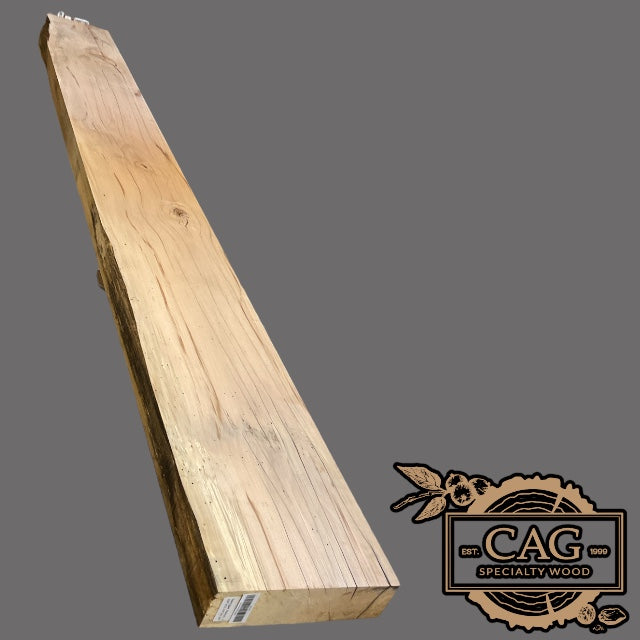


Sweetgum Mantels
|
Common Name(s): Sweetgum, Redgum, Sapgum, satin walnut Scientific Name: Liquidambar styraciflua Distribution: Southeastern United States Tree Size: 65-100 ft (20-30 m) tall, 2-3 ft (.6-1 m) trunk diameter Average Dried Weight: 34 lbs/ft3 (545 kg/m3) Specific Gravity (Basic, 12% MC): .46, .55 Janka Hardness: 850 lbf (3,780 N) Modulus of Rupture: 12,500 lbf/in2 (86.2 MPa) Elastic Modulus: 1,640,000 lbf/in2 (11.31 GPa) Crushing Strength: 6,320 lbf/in2 (43.6 MPa) Shrinkage: Radial: 5.3%, Tangential: 10.2%, Volumetric: 15.8%, T/R Ratio: 1.9 |
Color/Appearance: Wide sapwood is whitish to light pink or tan color, and is sometimes referred to as “sapgum” or “sweetgum.” Heartwood is gray to reddish brown, and is commonly referred to as “redgum.” Heartwood with darker black streaks is called “figured redgum.” Quartersawn pieces have a ribbon-stripe appearance.
Grain/Texture: Grain is interlocked, with a very fine, uniform texture. Good natural luster, this wood has sometimes been called “satin walnut.”
Endgrain: Diffuse-porous; small pores in no specific arrangement, very numerous; exclusively solitary and/or in radial multiples of 2-3; tyloses common; growth rings indistinct; rays not visible without lens; parenchyma not visible with hand lens.
Rot Resistance: Heartwood sections are rated as moderately durable to non-durable regarding decay resistance, while the sapwood is perishable. Also susceptible to insect attack.
Workability: Generally easy to work, though planing can produce tearout due to interlocked grain. Sweetgum is known to warp and distort badly during initial drying. (After initial drying, distortion is significantly less, but the wood still experiences an appreciable amount of movement in service.) Turns, glues, stains, and finishes well. Responds moderately well to steam bending.
Odor: No characteristic odor.
Allergies/Toxicity: Although severe reactions are quite uncommon, Sweetgum has been reported to cause skin irritation. See the articles Wood Allergies and Toxicity and Wood Dust Safety for more information.
Pricing/Availability: Because the sapwood is so wide, only older mature trees will yield the darker Redgum heartwood lumber. Sapgum is widely available at low cost, while Redgum is more uncommon, and prices can be in the mid range for a domestic hardwood, with prices for figured and/or quartersawn pieces costing more.
Sustainability: This wood species is not listed in the CITES Appendices, and is reported by the IUCN as being a species of least concern.
Common Uses: Veneer, plywood, furniture (speaker/acoustic cabinets), interior trim, boxes/crates, and turned objects.
Comments: Not to be confused with various Australian species in the Eucalyptus genus that are also referred to as “red gum.”
Related Species:
None available.
Related Articles:
None available.
Sweetgum Mantels
Sweetgum Mantel 1 - 112"x7.5"x3.5"
4050 Old Cornelia Hwy
Gainesville GA 30507
United States
Wood Calculator Section
Need Help Figuring out how much you need ?
One Board foot = 144 Cubic Inches
Example: If you need a piece of wood 12 inches wide, 1 inch thick and 24 inches long, that is equal to 2 board feet.
12 inches x 1 inch x 24 inches = 288 inches. 288/ 144 = 2 board feet

